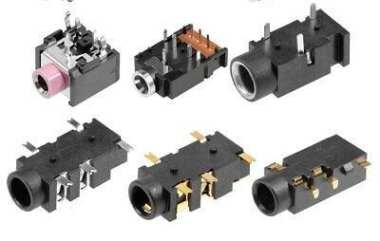Audio connectors play a crucial role in the electronic components industry, ensuring the quality of signal transmission between audio devices. With continuous advancements in audio technology, the types, performance, and application fields of audio connectors are constantly expanding. This article provides a comprehensive introduction to the definition, types, working principles, characteristics, advantages, and applications of audio connectors.

I. What Are Audio Connectors?
Audio connectors are electrical or optical connectors used to transmit analog or digital audio signals, facilitating modular connections and hot-swapping capabilities between devices through plugs and sockets. Among them, the phone jack (such as the 3.5mm headphone jack) is one of the earliest and most widely used types of audio connectors, with a basic structure comprising a metal plug and an insulating sleeve for transmitting unbalanced analog signals.
II. Types
XLR Connectors: With a three-pin circular design, XLR connectors support balanced audio signal transmission, effectively suppressing electromagnetic interference. They are commonly used to connect microphones with professional audio equipment.
TS/TRS Connectors (1/4 inch): TS (Tip-Sleeve) connectors are used for mono unbalanced signals, while TRS (Tip-Ring-Sleeve) connectors are used for stereo or balanced signals. These connectors are widely used in instruments, mixing consoles, and headphone interfaces.
RCA (Phono) Connectors: A dual-core unbalanced interface, RCA connectors are popular in home theater systems, CD players, and turntables due to their low cost and ease of use.
Speakon Connectors: Developed by Neutrik, Speakon connectors feature a locking mechanism and are designed to handle high current. They are primarily used in stage audio systems and professional speaker setups.
3.5mm Mini Jacks: The most common unbalanced analog interface in consumer electronics, 3.5mm jacks are found in devices such as smartphones, tablets, and laptops, offering convenient audio connectivity.
USB Audio Interfaces: Including USB-A, USB-C, and MIDI standards, USB connectors can directly transmit digital audio data. With the rise of digital audio, they have become increasingly common in professional recording and live streaming setups.
Optical (TOSLINK) Connectors: Optical connectors transmit digital audio signals using light pulses, offering zero electromagnetic interference. They are commonly found in home theater and high-fidelity audio equipment.
Get more details: What Are Audio Connectors?
